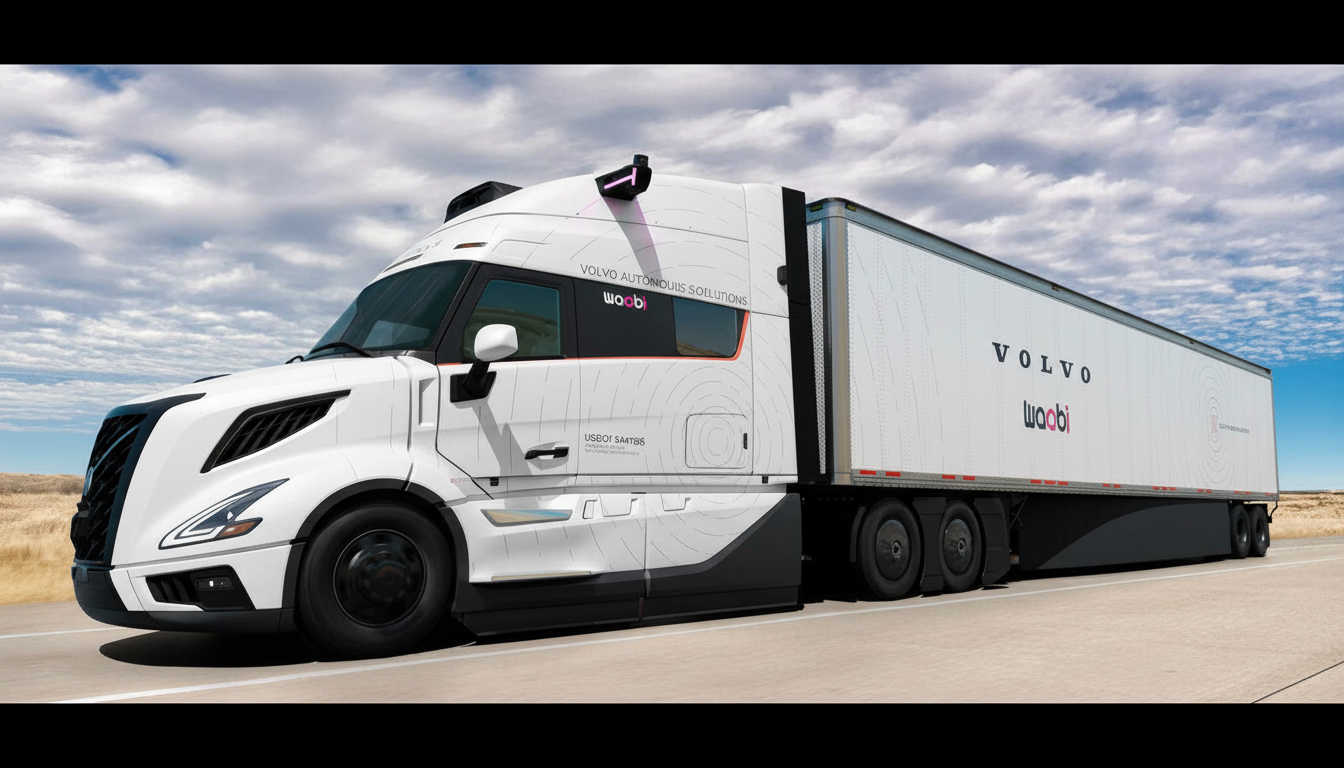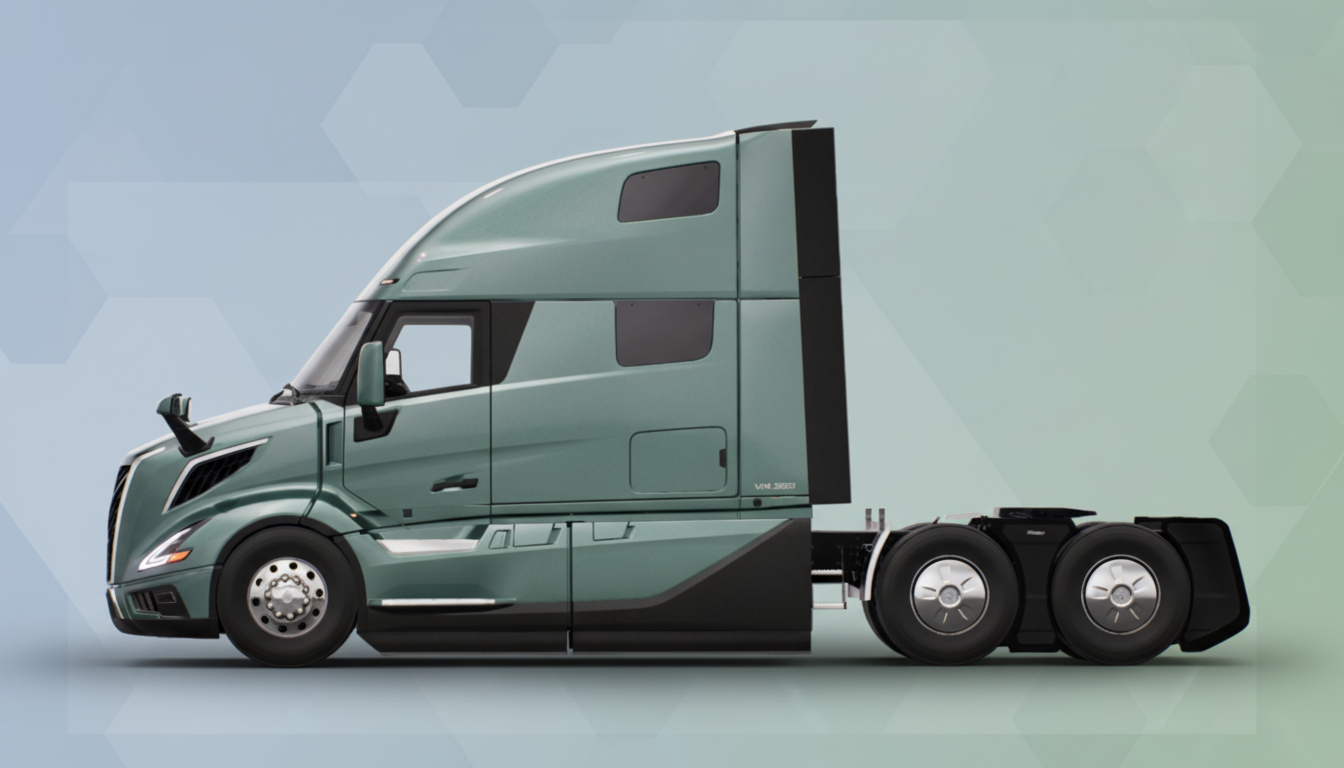Autonomous trucking startup Waabi unveiled its line of self-driving Class 8 trucks today, whose design the company says is entirely optimized for autonomy. Parsing out which parts will actually make it onto a factory floor, though, is still to be determined.
Read more

The vehicle will combine Volvo’s purpose-built autonomy software system with Waabi’s AI-driven hyperscale capabilities to power and commercialize driverless trucking services beyond highways and into urban and other surface road settings that form the bookends of freight hauls.
A factory-ready autonomous Volvo truck platform
At the heart of the unveil is an autonomous-optimized Volvo VNL. Unlike retrofit construction, redundancies (steering redundancy, braking redundancy, powertrain redundancy and compute) are fully integrated into the platform chassis and electrical supply architecture. That fail-operational design is what regulators and fleet operators have come to expect if the human driver is going to come out of the loop.
Waabi’s sensors are pods — both weight-conscious and aerodynamically compact. As they’re integrated to the assembly line rather than bolted on afterward, pods are designed to minimize maintenance complexity and maximize calibration fidelity throughout the vehicle’s life. The compute stack runs on automotive-grade hardware with thermal and power management for endurance in long-haul duty cycles.
Inside the Waabi Driver autonomous software stack
Waabi’s software, called the Waabi Driver, is deployed using an end-to-end AI approach that leverages lessons from large-scale simulation and real-world data to plan and control the vehicle. The company’s simulation environment stress tests the system for edge cases and rare event occurrences, allowing it to generalize across regions, road types, and weather without manually tuning for every new lane. That’s critical in freight: Shippers don’t want a custom integration per route (if the carrier you’re evaluating even has coverage there).
The company says its trucks are already doing both highway driving and everyday surface streets in Texas, one of the first proving grounds for heavy-duty AVs because of that state’s permissive laws and freight-heavy corridors. Tens of thousands are being sold across multiple states, with plans underway to expand coverage in a methodical manner throughout the U.S., matching software capability with customer lanes and operational readiness.
Competition and the path to a commercial roadmap
Volvo is also exploring several autonomy tracks. It is also working with Aurora, which showed off a Volvo-based autonomous truck and recently started doing supervised commercial hauls on the Dallas–Houston lane, now extended to El Paso. Waabi’s truck is based on the same Volvo autonomy stack but has a different sensor layout and the Waabi Driver behind the wheel.

The broader field remains crowded. Kodiak Robotics is expanding its hub-to-hub commercial service in the southwest, where it will better position itself to loosen regulations and tests farther down the line, while Daimler Truck is pushing a safety case on its own developed Freightliner Cascadia platform with Torc Robotics. Waymo Via pumped the brakes, and TuSimple withdrew, underscoring how capital intensity and safety validation has lifted the barrier to entry. Waabi’s particular innovation is the focus on end-to-end AI, and a lot of reliance on simulation, in order to collapse time-to-coverage – an approach that if it works could see lanes open up significantly faster without increasing too heavily the engineering challenges behind each new lane.
Safety and the evolving regulatory context for AVs
Testing robust self-governance against a backdrop of strict safety. But NHTSA’s standing order on advanced driver-assistance and automated driving crash reports also keeps the federal eyes on performance while FMCSA continues work around ADS-equipped commercial motor vehicles with respect to interstate control. Some, like Texas and Arizona, permit the driverless testing of heavy trucks, but others remain cautious, resulting in a patchwork of operational restrictions.
Volvo’s fail-operational architecture, in turn, is intended to reflect those nascent aspirations: graceful degradation upon component failure, independent braking and steering paths, and continuous perception given partial sensor loss. Those capabilities are fast becoming “nice to have” competencies, and table stakes for unmanned operations on public roads.
Why it matters for freight networks and shippers
Self-driving trucks aim for the middle mile — long stretches of highway between distribution centers — where uptime and predictable lanes reap the greatest profits. The American Trucking Associations calculates that trucking hauls about 72 percent of U.S. freight by weight, and the industry still is struggling with a substantial and ongoing driver shortage that may surpass 160,000 over the next decade if current trends hold. AVs aren’t going to make every driving job obsolete, but they certainly can absorb the slack in overnight and peak-demand capacity while human drivers focus on first and last mile.
Safety remains the primary yardstick. Fatalities in crashes involving large trucks have stubbornly remained high in recent years, according to NHTSA data, and since the safety benefits of seeing everything around you at all times, never getting tired or noticing that it’s Sunday don’t quite add up to significant improvements over the same old cost story. If autonomy can actually lower collision rates meaningfully while maintaining high asset utilization, fleets might see lower cost-per-mile alongside fewer incidents — both benefits that compound in large networks.
Follow the money and the milestones to autonomy
Waabi’s partnership builds off an investment from Volvo Group Venture Capital announced in June and comes on the heels of the startup’s latest fundraising earlier this summer that drew in a number of strategic backers, including Nvidia as well as investors associated with Uber’s self-driving unit. The proving-out steps are well-known: Pilot freight with paying customers, rollout to multistate lanes and a thoughtful shift from supervised to driverless operations once the safety case clears internal and regulatory vetting.
With a production-oriented platform from Volvo and what Waabi calls a “very strong” software stack catering to speedy generalization, this is looking less like a technology demonstration than you might have thought. The freight market will measure it based on uptime, safety metrics and steady lane expansion — things that will determine which autonomy programs move from headline to habit across the nation’s vast logistics network.

